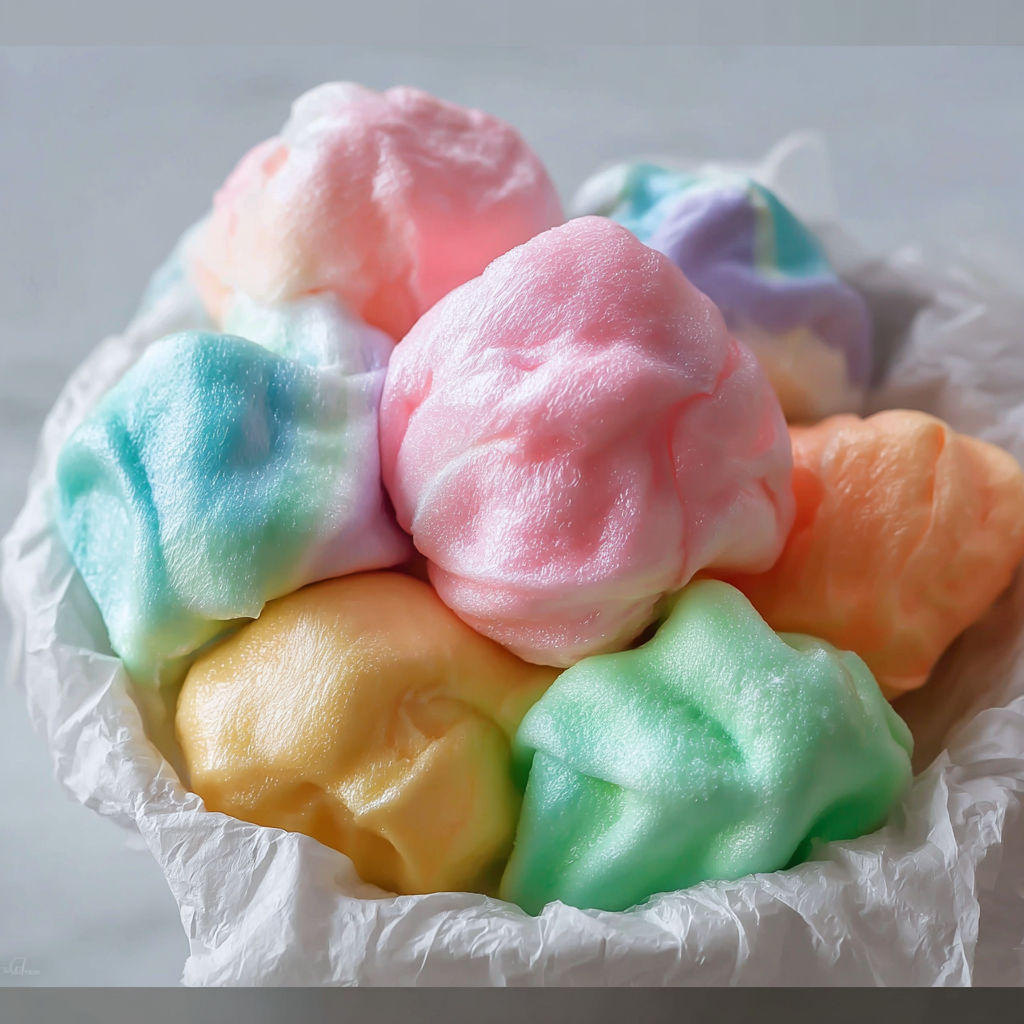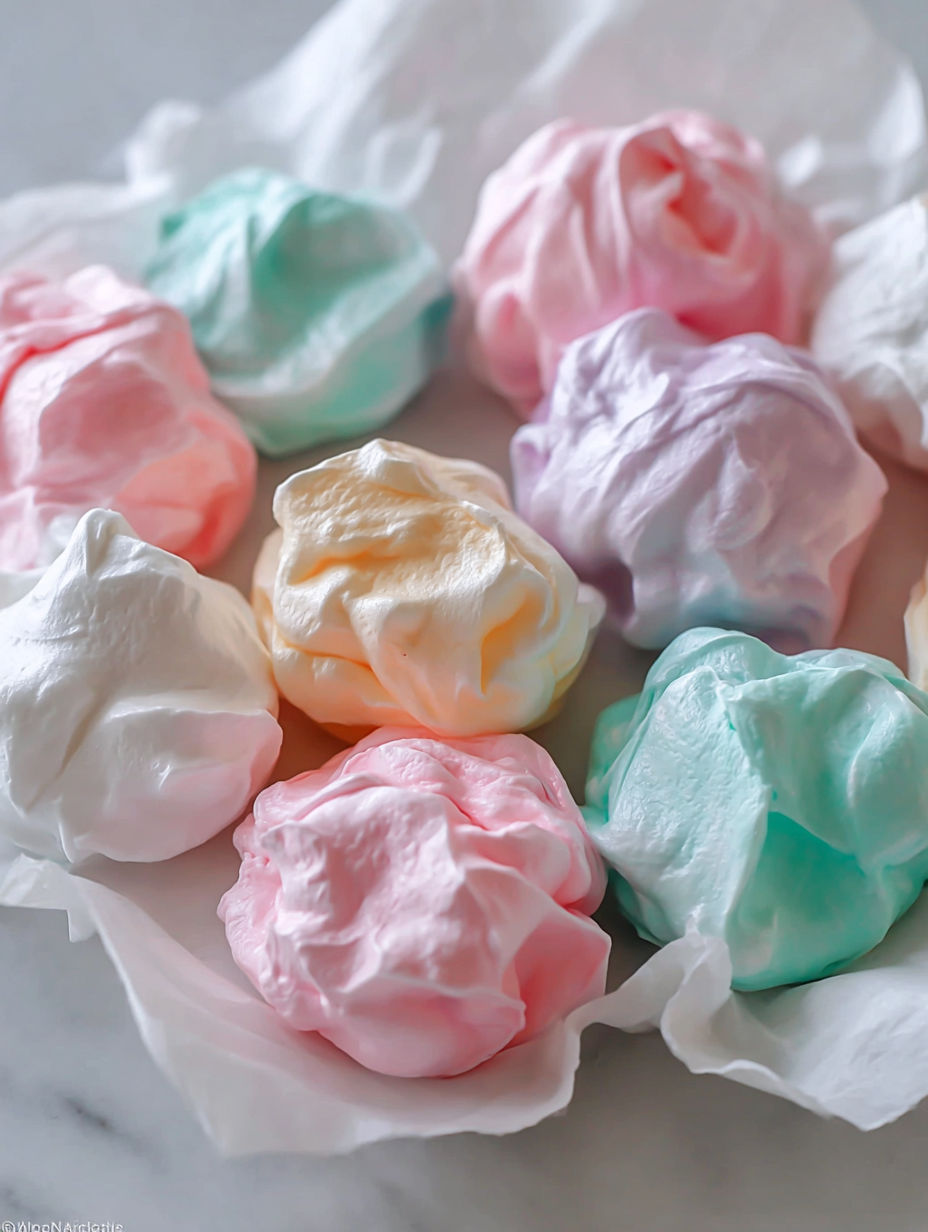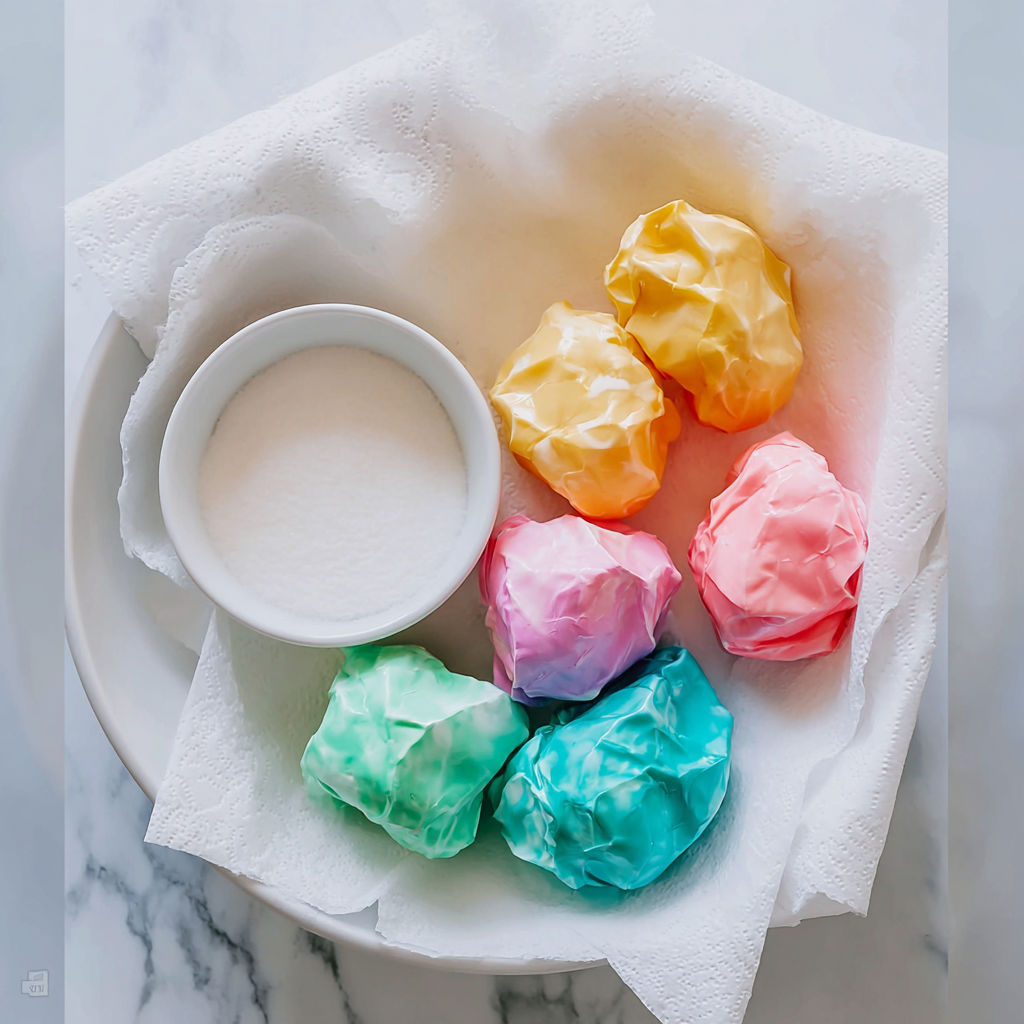 Pin
Pin
This homemade taffy brings back the joy of classic candy-making right into your kitchen. The sweet, stretchy treat transforms from a simple syrup into a delightful confection through the magical process of pulling, creating those signature swirls and a perfect chewy texture.
I first made this taffy during a rainy weekend when my nieces were visiting. What started as a kitchen experiment became our favorite tradition. Now whenever they visit, they immediately ask if we can make "stretchy candy" together.
- Granulated sugar provides the sweet foundation and proper crystallization
- Unsalted butter adds richness and prevents sticking during pulling
- Light corn syrup creates that signature chewy texture and prevents sugar crystallization
- Water helps dissolve the sugar and achieve the right consistency
- Salt balances sweetness and enhances flavor use fine sea salt for best results
- Vanilla extract adds depth of flavor choose pure rather than imitation
- Food coloring lets you customize look choose gel colors for vibrant results without affecting texture
How To Make Homemade Taffy
- Prepare Your Workspace:
- Before beginning, set up a heat-resistant workspace with a marble slab or baking sheet lightly coated with butter. Have wax paper squares cut and ready for wrapping. The cooling and pulling process happens quickly, so preparation is crucial.
- Create The Sugar Base:
- Combine sugar, corn syrup, water, and salt in a medium heavy-bottomed saucepan. Stir over medium heat until sugar completely dissolves, about 3 to 4 minutes. The mixture should become clear without any sugar granules visible when rubbed between fingers.
- Boil To Temperature:
- Once dissolved, stop stirring completely and allow the mixture to boil undisturbed. Attach a candy thermometer to the side of the pan, ensuring it doesn't touch the bottom. Let it reach exactly 260°F, which is the firm ball stage. This typically takes 8 to 10 minutes but rely on your thermometer rather than timing.
- Add Flavorings:
- Remove from heat immediately when temperature is reached. Carefully stir in butter until melted, then add vanilla extract. For colored taffy, add 4 to 6 drops of food coloring and stir gently until incorporated.
- Initial Cooling:
- Pour the hot mixture onto your prepared surface in an even layer. Allow it to cool for exactly 5 minutes. The edges will start to firm while the center remains slightly warmer. Test by gently pressing with a buttered finger it should be warm but not hot enough to burn.
- Pull The Taffy:
- With buttered hands, fold the edges toward the center and lift the entire mass. Begin pulling by stretching it to arm's length, then folding it back on itself. Repeat this motion continuously for 10 to 15 minutes. The taffy will lighten in color, become increasingly opaque, and develop a satin-like sheen when ready.
- Shape And Wrap:
- Once properly pulled, roll the taffy into a long rope about 1/2 inch in diameter. Using buttered kitchen scissors or a sharp knife, cut into 1-inch pieces. Immediately wrap each piece in wax paper, twisting the ends to secure. Work quickly as the taffy will gradually harden.
The pulling process has always fascinated me. Watching the taffy transform from a transparent amber syrup to an opaque, silky confection feels like pure kitchen magic. My grandmother taught me that patience during pulling is what distinguishes great taffy from merely good taffy. Those extra few minutes of pulling create that perfect resistance when you bite into it.
Weather Considerations
Candy making is highly sensitive to humidity. On rainy or extremely humid days, your taffy may never achieve the right consistency, remaining sticky regardless of pulling time. Ideal conditions include dry days with humidity below 60%. If you must make taffy on a humid day, you might need to cook the mixture to a slightly higher temperature (262-265°F) to compensate for the extra moisture in the air.

Flavor Variations
While vanilla taffy is a classic, this recipe serves as an excellent base for countless flavor variations. Replace vanilla extract with other extracts like peppermint, almond, or lemon. For fruit flavors, add 1/4 teaspoon of fruit oil extracts (not water-based extracts) along with complementary food coloring. Cinnamon taffy with a few drops of red food coloring makes a festive holiday treat. For chocolate taffy, add 2 tablespoons of cocoa powder when mixing the initial ingredients.
Safety First
Working with hot sugar syrup requires caution. Keep children at a safe distance during the cooking and initial pouring stage. Use heat-resistant utensils and wear long sleeves to protect your arms during the cooking process. Have a bowl of ice water nearby in case of accidental burns. Once the taffy has cooled enough for pulling, children can safely participate in the fun part with proper supervision.

Recipe FAQs
- → Why do you need to pull taffy?
Pulling taffy incorporates air into the candy, which creates its characteristic light, chewy texture. The stretching and folding process also helps cool the candy evenly and develops the glossy appearance that makes taffy so appealing. Without this crucial step, the candy would remain dense and hard rather than becoming pleasantly chewy.
- → How long does homemade taffy stay fresh?
When properly wrapped in wax paper or cellophane, homemade taffy can stay fresh for 1-2 weeks at room temperature. For longer storage, keep it in an airtight container in a cool, dry place. The key is ensuring each piece is individually wrapped to prevent sticking and exposure to air, which can make the taffy hard.
- → Can I add different flavors to taffy?
Absolutely! While this version uses vanilla extract, you can experiment with many flavor options. Popular choices include peppermint, lemon, orange, strawberry, or almond extracts. Add approximately 1/2 to 1 teaspoon of your preferred flavoring when you add the vanilla. Just be sure to use oil-based or concentrated flavoring for the best results.
- → Why did my taffy turn out too hard?
Taffy becomes too hard when the sugar mixture is cooked to too high a temperature. The 260°F (127°C) temperature is critical - even just a few degrees higher can result in hard candy instead of chewy taffy. Using a reliable candy thermometer is essential. If your taffy is still too hard, you may need to adjust the temperature slightly lower next time, as individual stoves and cookware can affect heat distribution.
- → Do I need special equipment to make taffy?
While you don't need professional candy-making equipment, a few tools are essential: a candy thermometer for achieving the precise cooking temperature, a heavy saucepan for even heating, and a heat-resistant surface like a marble slab or greased baking sheet for cooling. Silicone gloves or butter-greased hands also make the pulling process much easier and prevent painful burns from the hot candy.
- → Can I make taffy without corn syrup?
Though traditional taffy recipes call for corn syrup to prevent crystallization and create the right texture, you can substitute honey, golden syrup, or a homemade invert sugar syrup (made with sugar, water, and a small amount of acid like lemon juice or cream of tartar). Each alternative will slightly affect the final flavor and texture, with honey providing a distinct flavor profile.
